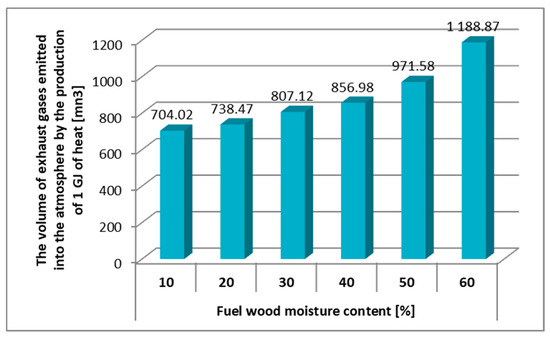
Fgds Zaklyuchenie Norma
Dolzhen-byt-u-rebenka-norma-gemoglobina-i-kak-ee-regulirovat.html 2015-07-17 0.6. 0.6 2015-07-16 0.6. Results and conclusion; Resultados e conclusoes Energy Technology Data Exchange (ETDEWEB). This chapter shows the results.
Fibroblast growth factor 19 (FGF19) is increasingly recognized as a key hormone regulating many functions. A recent publication by Luo et al. In Science Translational Medicine has advanced understanding of the diverse actions of FGF19 and has suggested how therapeutics with this protein may be optimized (). FGF19 in humans is a 24 kDa protein which is syntenic with FGF15 in rodents; both have similar tissue distribution and actions and are sometimes known as FGF15/19 (). FGF15/19, together with FGF21 and FGF23, are members of the larger group of fibroblast growth factors and share the property of low heparin sulfate binding, which allows them to function as circulating endocrine molecules with effects on distant tissues. FGF15/19 has major effects regulating hepatic bile acid synthesis () and also acts on carbohydrate and lipid metabolism ().
View & download of more than 8 Intertherm PDF user manuals, service manuals, operating guides. Furnace, Indoor fireplace user manuals, operating guides & specifications. Intertherm bdm35 manual. INSTALLATION INSTRUCTIONS DIRECT VENT DELUXE. WARNING: IF THE INFORMATION IN THIS MANUAL. For the BDM35 fireplace, a natural gas to propane gas conver.
FGF21 also has metabolic functions, and FGF23 is the key hormone regulating phosphate homeostasis. These effects are produced through FGF receptors (FGFR). FGF15/19 at physiological levels acts preferentially through FGFR4, which forms complexes with β-Klotho, and produces intracellular effects through kinase actions (,). FGF19 is synthesized in the ileum in response to bile acid absorption. Bile acids bind to farnesoid X receptor (FXR) and potently activate transcription of FGF15 in mouse intestine () and FGF19 in human ileal explants [reviewed in ()].

FGF19 enters the portal venous circulation and inhibits new bile acid synthesis in the liver by decreasing CYP7A1 activity, thus providing negative feedback. Serum FGF19 increases after meals () and is much lower in patients who have had ileal resection or with inflammation in Crohn’s disease (-). Impaired regulation of bile acid synthesis by FGF19 has been proposed to be a causative factor in the common disorder known as primary bile acid diarrhea or idiopathic bile acid malabsorption ().
Furthermore, obeticholic acid, a semi-synthetic modified bile acid and a potent FXR agonist, stimulated FGF19 production and improved symptoms in these patients (). A role for defective FGF15/19 in bile acid-induced diarrhea is further supported by evidence from mouse models with knock-out of the components of FGF15 system ( Fgf15, Fgfr4 and Klb) which have increased fecal bile acid loss, increased synthesis and a larger bile acid pool size.Additionally, severe diarrhea resulted in monkeys when FGF19 was neutralized with antibodies [reviewed in ()]. Therapy to increase FGF19 actions seems to be a promising approach to treating this form of chronic diarrhea associated with excess bile acid production. The metabolic actions of FGF19 also suggest therapeutic possibilities in obesity, diabetes and the metabolic syndrome (,,).
Obese subjects and those with nonalcoholic fatty liver (NAFLD) and/or metabolic syndrome may have lower median serum FGF19 levels (), which increase rapidly after bariatric surgery (). Obeticholic acid stimulates FGF19 and produced clinical and histological improvements in NAFLD patients (). Importantly, FGF19 may be beneficial in cholestatic disorders. FGF19 is secreted by the human gallbladder into bile and transcripts are greatly increased in the livers of patients with extrahepatic cholestasis with increased amounts of protein being found in blood (). It has been suggested that the role of this induced FGF19 is to inhibit bile acid synthesis by CYP7A1 in an autocrine/paracrine fashion so preventing accumulation of toxic levels of bile acids. After liver resection in mice, FGF15/19 was shown to modulate bile acid levels preventing toxic injury and improving survival. Liver growth, DNA synthesis and cell proliferation were increased ().
Such proliferative actions have led to concern about the possible relevance of FGF19 for liver neoplasia in humans (). Indeed, FGF19 and FGFR4 are co-expressed in a proportion of human liver, lung and colon tumors (). Expression of FGF19 was associated with recurrence and a relatively poor prognosis in hepatocellular carcinoma (). In a transgenic mouse model, overexpression of human FGF19 in skeletal muscle (to levels many hundred times those normally found) resulted in increased hepatocyte proliferation and hepatocellular carcinomas, and increased proliferation also occurred after injection of supraphysiological amounts (30 µg/mouse) of recombinant FGF19 ().